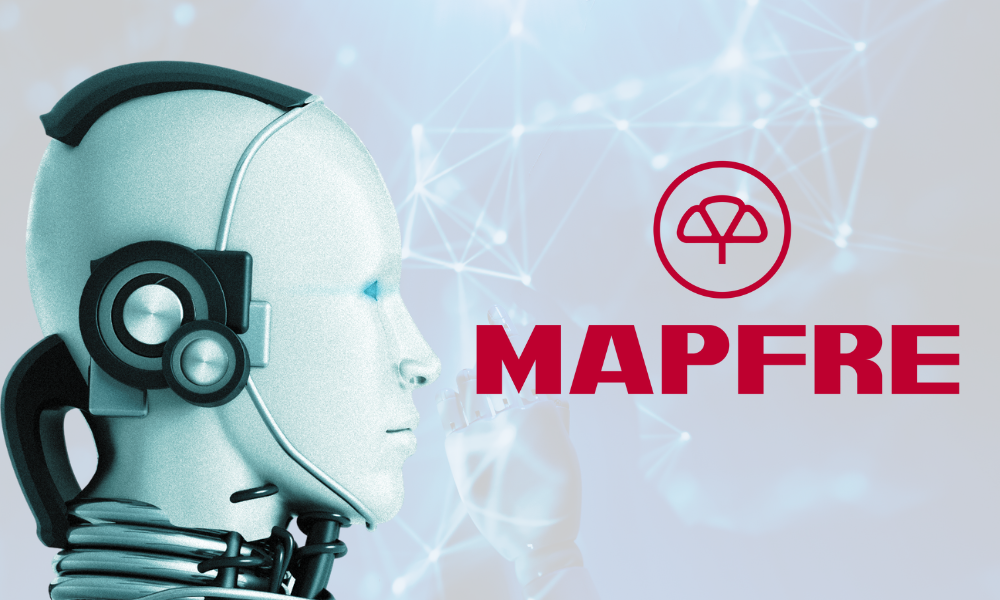Generative Artificial Intelligence (Generative AI) is helping to transform the world we live in, with a very high rate of technological development and adoption amongst society and businesses. Delving deeper into society’s use of this technology and reflecting on how its adoption can impact our way of life is critical to ensuring a better future.
MAPFRE, a leading insurance company in Spain and the top insurance group in Latin America, has conducted an analysis to propose four scenarios in which Generative AI could impact society by 2029, and to study what role the insurance industry could play in each of them. The resulting report is entitled: Exploring tomorrow: the role of insurers in a society marked by Generative AI.
“We’re not trying to predict the future with the exercise outlined in the report,” explains José Antonio Arias, Chief Innovation Officer at MAPFRE. “Our objective is to carry out a balanced, bold, and sincere reflection on the eventualities that could arise in every possible scenario for the evolution of Generative AI. By doing so, we’ll be able to work so that, no matter what the future may hold, the best possible scenario for everyone materializes.”
Four evolution scenarios
As part of this exercise, reports, papers, and articles were consulted and interviews were conducted with experts from different fields, ranging from technology to sociology or economics. Based on this research, four plausible scenarios for 2029 were defined.
In each of these contexts, areas such as health and healthcare, mobility, cybersecurity, the relationship between people and their relationship to technology, the adoption of technology at a business and user level, leisure activities, education, and possible regulations were analyzed:
Continues…
- Scenario 1: The journey to homo sAIpiens. In this scenario, Generative AI is a transformational and fully accessible technology, with very permissive regulations. Its adoption is widespread, with multiple use cases and seamless interaction with the user thanks to the naturalness and friendliness of the assistants. There is limited awareness of the high psychological impact of its ubiquitous use and there are even signs of the homogenization of thought and polarization, high dependence, and even addiction at a particular level.
- Scenario 2: Remember all the Gen AI hype? Generative AI is a mature technology, without high financing flows and with high usage costs (similar to the situation now, at the start of 2024). Adoption is mainly productivity-oriented, with limited interaction that poses a barrier to use. There is also a high level of awareness about its functionalities. Companies have discouraged its use, and it is not a technology that generates expectations in itself, but it is a relevant enabling technology for the development of other disruptive technologies.
- Scenario 3: Chasing an antidote to chaos. Somewhat restrictive regulations limit the potential of Generative AI technological development, increasing usage costs, restricting viable use cases, making its adoption by companies difficult, and discouraging domestic use. There is also large-scale awareness of the psychological effects it has, and a certain preference for human interaction over machines prevails, especially in customer service.
- Scenario 4: Technology titans. There is a fast pace of development controlled by a small selection of Big Tech companies, which moderate the frequency of launches depending on their needs. Against this backdrop, there is widespread adoption by companies and individuals, with high compatibility with other technologies in the ecosystem of these Big Tech firms as well. There is an effective transition at the workplace level and irritation due to accumulation of power in these companies.
All these scenarios depict extreme realities, but they are within the realms of possibility, according to the perspectives collected during our research. “At MAPFRE, we don’t assess the probability of them occurring. We only say that they are possible, and that a combination of them will determine how reality is influenced by the evolution of Generative AI,” asserts the CIO.
Lines of action for the insurance industry
In these four scenarios, new risks emerge, while some preexisting risks are exacerbated by the proliferation of Generative AI. These risks are intrinsically linked to emerging and not-so-recent needs that become more relevant to people.
In response, the insurance industry must address two key aspects: on one hand, protecting itself and protecting its customers against these risks; and, on the other, adapting to meet the new protection needs that arise.
To this end, MAPFRE suggests a series of action plans to offer the sector a framework for reflection and the development of initiatives aimed at creating a positive impact on society:
- Cyber protection – The expansion of Generative AI poses an unparalleled challenge in data and system security given the increased sophistication of cyberattacks (undetectable malware, phishing with natural language, identity theft, etc.) against people and companies. Against this backdrop, there will be greater demand for protection through insurance with suitable coverage and services aimed at preventing, detecting, responding to, and recovering systems after cyberattacks.
- Responsible use of AI/Generative AI – The adoption of Generative AI entails risks ranging from system performance to regulatory compliance and the possibility of discriminatory biases. There will be demand for protection through insurance and services that facilitate the responsible and reliable use of Generative AI-based tools.
- Health and mental health – Generative AI offers great potential to improve healthcare processes and the patient experience, as well as freeing healthcare staff from administrative tasks. The flip side of the coin is that this could aggravate physical health problems and mental health issues already observed as a trend due to the use of digital technologies in general.
The insurance industry must strengthen its commitment to services and products to prevent and treat such illnesses and contribute to leveraging these technologies to improve the patient experience and effectiveness of treatments.
- New customer relationships and more suitable products – Generative AI will promote interaction with customers, generating more data and fostering a new relationship model supported by chat assistants that will offer greater accessibility and transparency in the insurance world. This conversational approach not only facilitates the exchange of information, but also enhances the quality of the data collected.
Thus, a huge opportunity arises to capitalize on this information to develop products and services increasingly tailored to the customer’s needs (e.g., microsegmentation for dynamic insurance, on/off insurance, hyperpersonalised offers, etc.).
- Fraud – The democratisation of tools that make it possible to falsify images, audio, and videos will trigger an exponential increase in attempted claims fraud for insurance companies. Therefore, these institutions must implement mechanisms and tools that enable the detection of false evidence.
- Educating teams – On one hand, there is a palpable need for new experts in Generative AI, as well as in related areas (business, data, security, ethics, etc.). On the other, social science profiles (anthropologists, sociologists, etc.) and humanities profiles (linguists, historians, philologists, etc.) are required to guarantee responsible and reliable development and use of Generative AI.
“The awareness and education of society regarding the responsible and appropriate use of Generative AI is essential in all areas. Insurers must contribute in this regard, taking preventive measures to reduce the risks to which individuals and companies are exposed,” says José Antonio Arias.
He adds: “There’s no time to waste, and at MAPFRE we’re already hard at work.”








